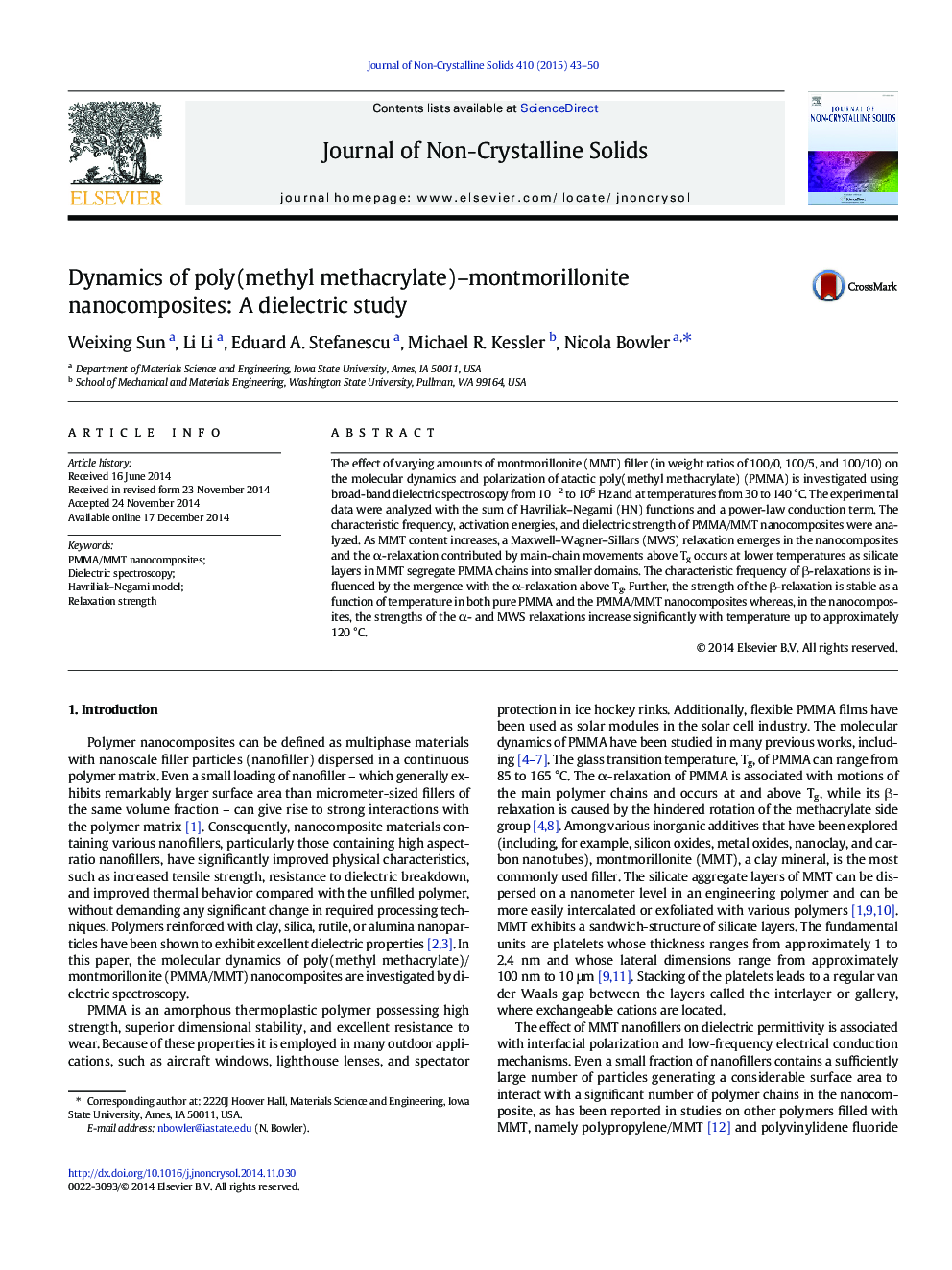| Article ID | Journal | Published Year | Pages | File Type |
|---|---|---|---|---|
| 1480803 | Journal of Non-Crystalline Solids | 2015 | 8 Pages |
•Effect of nano-scale montmorillonite (MMT) on dielectric properties of poly(methyl methacrylate) (PMMA) is investigated.•Dielectric spectra of PMMA/MMT nanocomposites are fitted by Havriliak–Negami (HN) functions and a power-law conduction term.•Dielectric relaxations of PMMA/MMT nanocomposites are analyzed as a function of temperature and frequency.
The effect of varying amounts of montmorillonite (MMT) filler (in weight ratios of 100/0, 100/5, and 100/10) on the molecular dynamics and polarization of atactic poly(methyl methacrylate) (PMMA) is investigated using broad-band dielectric spectroscopy from 10−2 to 106 Hz and at temperatures from 30 to 140 °C. The experimental data were analyzed with the sum of Havriliak–Negami (HN) functions and a power-law conduction term. The characteristic frequency, activation energies, and dielectric strength of PMMA/MMT nanocomposites were analyzed. As MMT content increases, a Maxwell–Wagner–Sillars (MWS) relaxation emerges in the nanocomposites and the α-relaxation contributed by main-chain movements above Tg occurs at lower temperatures as silicate layers in MMT segregate PMMA chains into smaller domains. The characteristic frequency of β-relaxations is influenced by the mergence with the α-relaxation above Tg. Further, the strength of the β-relaxation is stable as a function of temperature in both pure PMMA and the PMMA/MMT nanocomposites whereas, in the nanocomposites, the strengths of the α- and MWS relaxations increase significantly with temperature up to approximately 120 °C.
